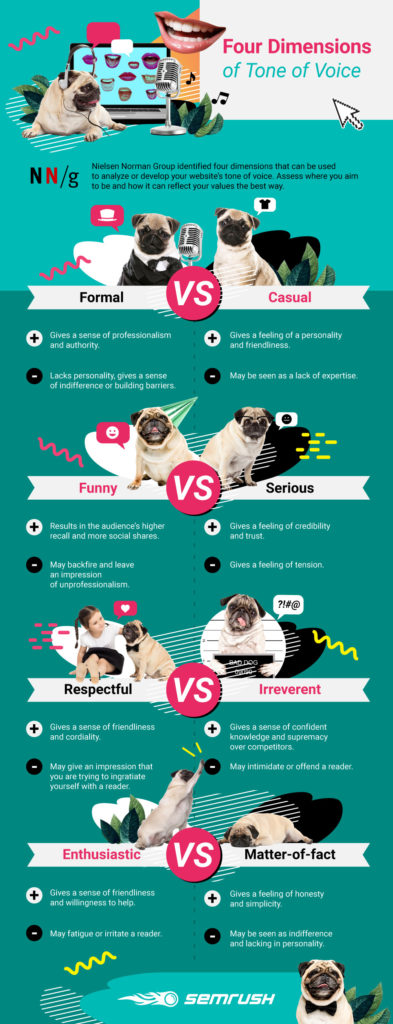
Understanding Brand Strategy: What Questions to Ask & Principles to Follow
Table of Contents
Brand strategy is not exactly a preferred topic at dinner parties or an item to check off our daily list of tasks. It’s also not uncommon to speak about it in jest, much like we do terms like marketing strategy, ROI, and customer avatars. But if we want to emulate large brands like Starbucks and Apple and set ourselves up for long-term sustainable growth, understanding brand strategy is critical.
These large brands are successful not just because they offer products consumers like and desire. A great product will not sustain growth without a powerful brand backing it. And powerful brands are birthed from bulletproof brand strategies.
What Is a Brand Strategy?
We spend a lot of time executing marketing tactics like running ads and posting on social, but we seldom see the big picture of how everything fits together.
A brand strategy is a long-term plan that outlines your business goals and your brand’s mission and values—what you stand for and how you want your audience to perceive you. This strategy includes much more than your colors and logo. It encompasses intangibles such as brand equity, sentiment, and your consumer’s thoughts and emotions when perceiving your brand.
Because brand strategy involves intangibles, it’s also tough to envision. This is the reason brands have been struggling with understanding brand strategy for years, even those that have been in business for decades. They either have one that isn’t performing (or they don’t know how to measure success), or they don’t understand the concept or where to start.
Brand strategy affects everything your business does. It’s that important. If it’s well defined, based on sound data, and executed correctly, it will outperform the competition, connect to your target audience, and help you achieve your long-term goals.
3 Brand Strategy Mistakes + Success Principles
How do you develop a brand strategy? First, you need to know its principles and look at where many businesses go wrong. Below are three mistakes to avoid, plus success principles to keep in mind as you take this journey to developing a brand strategy.
1) Focusing Heavily on the Short Term
Brand strategy does not materialize overnight. It focuses on sustainable long-term goals and growth. The problem is that many businesses get lured in by short-term tactics and quick sales.
Success Principle: When creating a brand strategy, step back and review your brand from a broader perspective. Think about your strategy on a year-to-year basis instead of from month to month. Look at your target audience and segments, positioning, competitors, and customers. This process can take some time to review and months to execute.
2) Rushing Your Tactics
Does this sound familiar? You launched a tactic on the fly, and it’s bringing in sales. Because of its positive performance, you add it to your strategy and then move on to the next hopefully successful tactic. It seems logical, right?
While it might be logical to base your strategy on a successful tactic that worked after randomly choosing a few, this will eat up your budget at some point as it’s the reverse of what should happen.
Brand strategy defines tactics, not the other way around. You never want to approach tactics blindly. You should have a good idea of what tactics and messaging will work before launching them to avoid wasting marketing spend. If the failed tactics culminated from a solid strategy, you would have known they were dead on arrival before you launched them.
According to brand consultant and former marketing professor Mark Ritson, “Once you have clarity on what tactics consist of, it is time to put them down. And don’t touch them until your strategy is complete. This may be bad news for a lot of people, but you cannot have a ‘digital strategy’ or a ‘media strategy’ or ‘Facebook strategy’ in any real sense of the words. There is just a brand strategy, which then feeds the tactical choices that follow it.”
3) Overstuffing Your Brand Strategy
Fashion stylists will tell you to never leave your house without taking off at least one accessory. Do the same with your brand strategy.
We often think that more is better—more accessories, more tactics, more objectives. But an overflowing brand strategy is no better than having none at all.
It’s tempting to try all the shiny new tactics and target everyone who will listen to your brand message. But in doing so, you will dilute your effectiveness and invest time and resources into failed objectives.
Understanding Brand Strategy: 4 Essential Questions to Answer
Have you developed a brand strategy? If not, or if you aren’t sure if your current strategy is rock solid and you want to revisit it, ask yourself the following questions to get the process started.
1) Who Is Your Target Customer?
Who are the people who fit your target customer avatar?
Do you have focused customer avatars?
Before you can research your competition, run ads, or compile your brand’s personality traits, the first order of business when creating your brand strategy is to define who your business serves.
Even if you already created customer avatars, revisit them to ensure they include detailed information on all aspects of your customer’s behavior, demographics, goals and objections, and interests.
Your customer avatars or buyer personas are the people (or companies, if B2B) who will be interested in your brand and products/services.
When building out your customer avatars, consider the following:
- Physical demographics (gender, location, education, job role, marital status)
- Information-retrieving habits (favorite podcasts, websites, gurus, events)
- Purchasing behavior (objections to purchase, purchasing role)
- Goals and values
- Challenges and pain points
Pro Tip: Don’t rely on guesswork to gather this data. Poll, question, and survey existing customers to get real data from the people you serve. If your business is new, research your industry Q&A sites, monitor social media conversations, and use your market research to create fictional personas until you have enough customers.
Need more help? Consult our guide on customer avatars to dig deeper into the topic.
2) Who Are We and What Do We Stand For?
If you’re a business owner working on your brand strategy, you need to figure out who you are and what you stand for.
And we don’t just mean identifying your company category, such as “retail store” or “law firm.”
It might help to think of your company as a real person instead of an entity. Then ask yourself these questions:
- What is my personality (e.g., reserved, outgoing, fierce, friendly, energetic, humorous)?
- What am I most passionate about?
- What do I find unimportant or boring?
- What makes me unique?
- What are my core values and attributes?
- Do I have a personal or a company brand?
Your answers to these questions will define your brand’s position or the way you want to be perceived in your market.
3) How Do We Communicate with Our Audience?
Once you know who you are, your brand values, personality, and attributes, and you know your audience, the next step is to develop your tone and communication style. How you communicate will set you apart from every other brand selling the same thing.
Zappos sells shoes and other items, just like thousands of other retailers. But the company became popular because it focused on customer service, which is evident in its messaging.
Zappos was one of the first to offer free shipping and returns and a 365-day money-back guarantee. Zappos also has a humorous and casual tone, which is consistent regardless of where the brand communicates with its audience.

How do you develop your communication style and tone? Your tone will develop from your brand’s personality and core values. Below is a handy graphic about how to define your brand’s tone.

Pro Tip: Always focus on brand authenticity, which requires an understanding of who you are and communicating that to your audience. If your style, tone, and messaging don’t come from an authentic place, it will have disastrous effects on your brand in the long term. As you create your brand strategy, focus on the human touch, keep your promises, and lead with integrity.
4) Where Do We Invest Time and Resources?
As mentioned earlier in the article, your strategy defines your tactics, not the other way around. Once you create your brand strategy, you’ll understand which tactics and projects will resonate best with your audience.
At this stage, you’re ready to put your research to work to determine…
- Type of marketing campaigns
- Marketing platforms
- Marketing campaign schedule
- Marketing tactics
- Metrics and KPIs
As you proceed through your campaigns, don’t forget about brand monitoring and testing. You’ll need to stay updated on your customers and your industry to adapt to changing customer needs.
Understanding Brand Strategy: What You Need to Know
Brand strategy is a complex topic—no doubt about it. Many businesses struggle with understanding brand strategy. And as a result, they can’t fully grasp what’s involved in creating one that solidifies their long-term success.
We just scratched the surface of brand strategy in this article. But we hope we have provided you with a foundation from which to start your research and strategy-creation process.
Is your brand strategy working for you? Is your marketing performing as well as it could? Get our FREE Marketing Audit and Review, which includes a full website review, evaluation of your social media presence, keyword rankings, branding review, and so much more!

